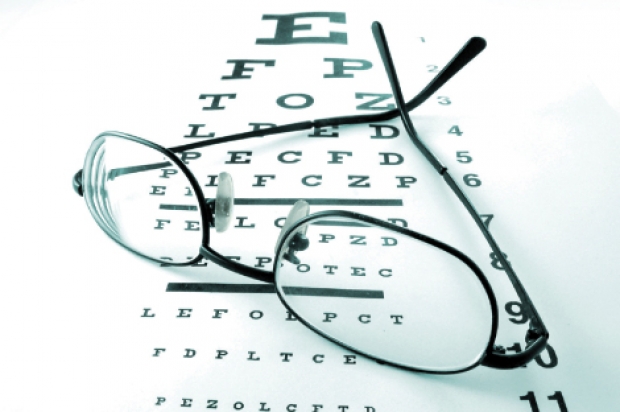Lasik surgery and eye care advancement are changing lives

British poet William Blake once wrote, “As a man is, so he sees. As the eye is formed, such are its powers.” Exercising this incredible sense unlocks our imagination, and guides us in perceiving the world. It affects how we process information and our decisions, our state of mind, and our spirit. We are fortunate to live in a rapidly advancing age of science and technology that can enhance as well as maintain this precious gift.
One such medical marvel is Lasik eye surgery, which is performed to correct farsightedness, nearsightedness, and other eye disorders like astigmatism (blurred vision) and presbyopia (impaired focus due to aging). Since its inception in 1990, more than 1 million patients have undergone vision correction through the procedure. It’s also relatively safe, with statistics from the Federal Drug Administration (FDA) reporting complications arising from Lasik surgery to be very low, hovering at between one and five percent.
The procedure has evolved to a painless 5- to 30-minute treatment, which allows patients to walk out minutes later seeing without glasses or contact lenses. It’s quite simple … a flap is cut at the top layer of the eye so that a laser can reshape the middle section of the cornea, known as the stroma. Then, within 24 hours, you can return to a normal routine. Successful eye surgery patients all say they wish they had done it sooner.
Criteria for laser vision correction
Not all patients are candidates for the surgery, and a good surgeon will discuss issues with patients and/or recommend a specialist in a particular technique. It’s always important to talk to your doctor first, but guideline points for whether you are a good candidate are below:
18 years or older for myopia (nearsightedness) or hyperopia (farsightedness)
21 years or older for astigmatism (blurred vision)
Glass or contact lens prescription has not changed in one year
Myopia between -0.50 and -14.00 diopters (unit of measurement of glasses contact lenses)
Astigmatism <5.00 diopters
Hyperopia <+6.00 diopters
Not taking medications such as Accutane, Imitrex or Amiodarone
Not pregnant or nursing
No eye problems such as collagen vascular diseases (lupus), autoimmune diseases (rheumatoid arthritis), immunosuppressive diseases (AIDS), no keloid (scar) formation during wound healing, no diabetic retinopathy if diabetes is present
Choosing a Lasik eye surgeon
Perfect vision … it’s an exciting prospect, but like all surgeries, do your homework. Talk to your primary care physician for recommendations. Then ask friends, family or colleagues who have had the surgery to share their experiences. Check with the American Board of Eye Surgery (ABES), www.aces-abes.org, to make sure your doctor is board certified with the accepted standards of quality and competency.
Laser vision correction technology
There are variations of laser vision correction and new technologies, which have made it possible to exceed patient expectations primarily due to a better evaluation of a patient’s exact refractive error. Treatments can be planned with computers that perform billions of calculations in a matter of seconds, and then lasers designed to achieve absolute precision are used to make the correction. There are slight differentials for various lasers such as Wavefront-guided LASIK to Excimer to IntraLaser.
Laser technology and leading causes of vision impairment and blindness
Laser technology is also being used in conjunction with surgeries for diabetic retinopathy and glaucoma, which are related to sight threatening pressure behind the eye. The laser techniques used for treatment are really determined by the level of severity of these two dangerous conditions affecting the eye, but might involve a focal laser photocoagulation or a scatter laser photocoagulation of the peripheral retina. Sometimes, it’s difficult to notice that you have a problem because there are no visual symptoms, especially for diabetic retinopathy, but it is characterized by the retina displaying dot and blotch hemorrhages, microaneurysms, etc.—basically this means blood leakage from the fine blood vessels. If left unchecked, both conditions can lead to blindness. The same holds true for uncorrected refractive errors, cataracts, and age-related macular degeneration. The message here is that regular vision screening and healthy eye habits are as important as the air we breathe.
Eye care aid
Most laser corrective procedures like Lasik are considered cosmetic and usually not covered under insurance, but there are all types of options to get you on your way and these should be discussed with your doctor or your insurance provider. Total eye health is another story, and if your health insurance does not cover vision, there are some options.
VISION USA – A program established by doctors of the American Optometric Association (AOA) to cover the cost of routine eye or vision care if you do not qualify for government aid. 1-800-766-466; visionusa@aoa.org
InfantSEE® – A public health program, managed by Optometry’s CharityTM – The AOA Foundation. It’s a comprehensive eye and vision assessment for infants within the first year of life regardless of a family’s income or insurance coverage to ensure that eye and vision care becomes an integral part of infant wellness and to improve a child’s quality of life. 1-888-396-EYES (3937)
EYE CARE AMERICA® (the foundation of the American Academy of Ophthalmology) – Eye exams and up to one year of care provided to U.S. citizens and legal residents through volunteer ophthalmologists for free for those who qualify, however, it does not cover the cost of eyeglasses, prescription drugs, hospital services or fees from other medical professionals. www.eyecareamerica.org; 1-800-222-EYES (3937)